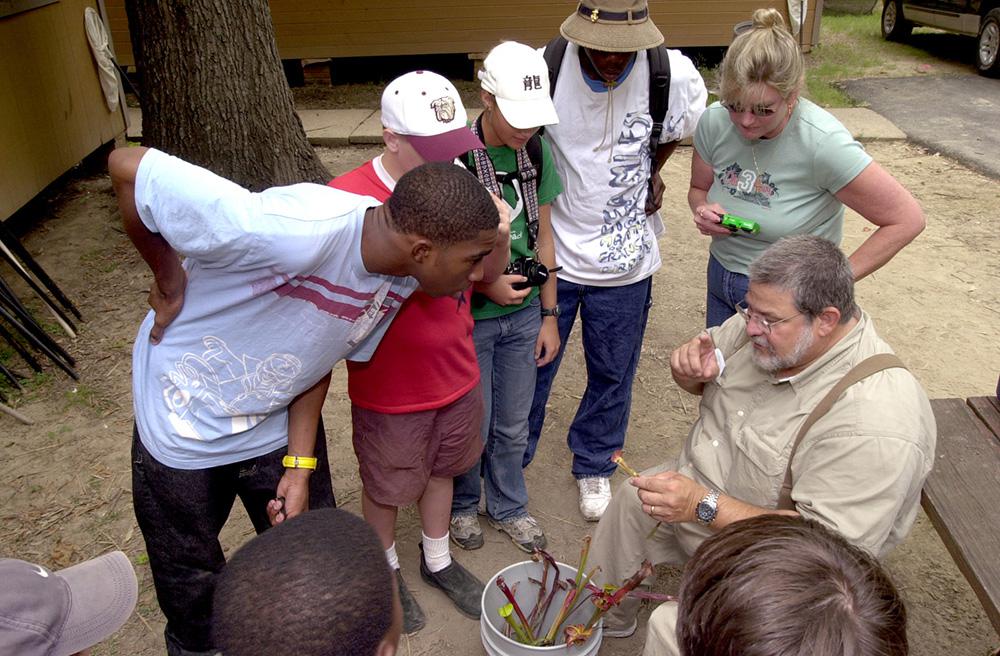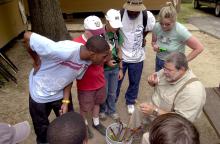Information Possibly Outdated
The information presented on this page was originally released on May 10, 2012. It may not be outdated, but please search our site for more current information. If you plan to quote or reference this information in a publication, please check with the Extension specialist or author before proceeding.
Plant secrets capture kids' imaginations
MISSISSIPPI STATE -- John Guyton enjoys digging up secrets and passing them along to others.
“I like to use little-known facts about nature to give people a different way to think about their environment and the ways they interact with that environment,” said Guyton, entomology specialist with Mississippi State University’s Extension Service.
His approach is especially helpful when it comes to teaching kids.
“The easiest way to get kids interested in nature is to tell them secrets they can use to amaze their family and friends,” said Guyton, “That sends them on a quest for the next great story or fact they can impress others with. It makes them want to know more about the mysteries in nature.”
Kids have a lot of distractions in today’s world, so getting them connected with nature is very important.
“Kids are much more easily engaged in learning if we present information to them in an interesting way,” Guyton said. “Most textbooks approach plant science by teaching how the vascular structure works. That is important to learn, but there are fun ways to learn about vascular structure. A good example is to blow bubbles in soapy water through a red oak twig and then a white oak twig, which has a different vascular structure. This is a good way to illustrate that white oak will not leak and red oak will leak. This is why white oak is used for wine barrels and red oak is used for the stopper, allowing carbon dioxide from fermentation to escape.”
Guyton’s passion for the wonders of nature took root during his childhood.
“I was fortunate to have two college-educated parents who both had natural curiosities,” said Guyton. “We swam in every creek we came across. For our family, exploring in the outdoors was natural and fun.”
But that is not the case with many families.
“People have stopped going outside,” he said. “When people are not outside, they do not understand nature. When people do not understand nature, they do not love or protect it.”
Such a scenario could be dangerous for plants, animals and humans.
“We are in a system on this planet, and that system includes everything -- all types of life, each one dependent on the other,” Guyton said. “A lot of the weeds that people want to eliminate from their lawns and gardens have practical and even medicinal uses.
Guyton said Buckhorn is commonly found in home lawns and was one of the supplies the Pilgrims brought over on the Mayflower. “It can be chewed and used to remove deeply embedded splinters. It has antifungal and antibacterial properties,” he said. “The British also eat it in salads.”
Lelia Kelly, horticulture specialist with MSU’s Extension Service, said adults have a responsibility to get kids involved in nature.
“As a parent myself, I think introducing kids to the outdoors is one of the most important things we can do,” said Kelly. “It is crucial that we teach them to be good stewards of their environment.”



